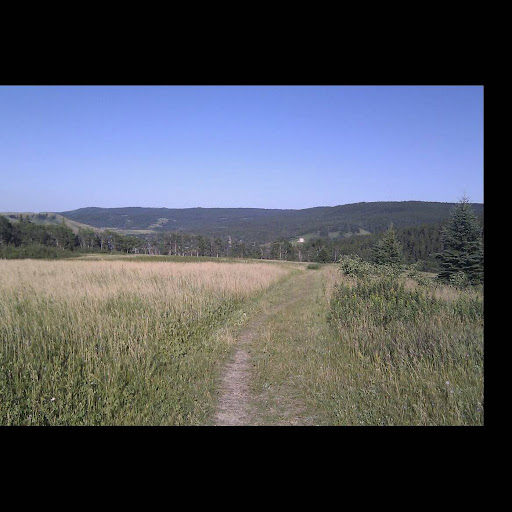Tom P Plunkett
age ~62
from Oswego, IL
- Also known as:
-
- Thomas P Plunkett
- Thomas H Plunkett
- Thomas E Plunkett
- Thomas J Plunkett
- Thos H Plunkett
- Thomas P Plunket
Tom Plunkett Phones & Addresses
- Oswego, IL
- Aurora, IL
- Lisle, IL
- 15228 Lincolnway St, Plainfield, IL 60544 • 8156098258
- 13953 Cambridge Cir, Plainfield, IL 60544 • 8156098258
- Romeoville, IL
- Bolingbrook, IL
- Wilmington, IL
- Willeys, IL
Us Patents
-
Constrained Layer Damped Steel Baffle
view source -
US Patent:6453892, Sep 24, 2002
-
Filed:Oct 11, 2001
-
Appl. No.:09/976202
-
Inventors:Tom Plunkett - Bolingbrook IL
Tom Staab - Chicago IL
Brent Boldt - Bartlett IL -
Assignee:Dana Corporation - Toledo OH
-
International Classification:F02M 2500
-
US Classification:123572
-
Abstract:A damped steel baffle for an engine cam cover aids in separation of oil mist entrained in a flow of crankcase air vented through the cam cover, and directs the air to a PCV valve atop the cover. The baffle forms a channel for the air, and effectively absorbs noise generated within the cover. Oil droplets condense on channel and baffle surfaces, and drain to an engine oil sump. The interface between baffle and cam cover is sealed with a foam gasket layer or RTV sealant. The baffle is constructed of two metal layers joined together by a thin layer of viscoelastic adhesive that converts vibrational energy into heat to dampen resonant vibrations. Amplitudes of vibration are significantly lower than for plain steel baffles, hence lower sound radiation is achieved. The individual steel layers are 0. 2 to 0. 6 mm thick; the viscoelastic layer has a thickness up to 0. 15 mm.
-
Multi-Layered Gasket
view source -
US Patent:8128098, Mar 6, 2012
-
Filed:Oct 22, 2009
-
Appl. No.:12/589329
-
Inventors:Tom Plunkett - Aurora IL, US
-
Assignee:Dana Automotive Systems Group, LLC - Maumee OH
-
International Classification:F02F 11/00
-
US Classification:277593, 277598
-
Abstract:A gasket is described having a middle layer, two metal layers and an uppermost and a lowermost layer. The middle layer may have an upper surface and a lower surface defining a first planar portion, a wave portion and a second planar portion. The metal layers sandwich the middle layer and are substantially planar. An uppermost active layer is located above the first intermediate layer. The uppermost active layer comprises a first planar portion, a first bead portion, and a second planar portion. The lowermost active layer is located below the second intermediate layer. The lowermost active layer also comprises a first planar portion, a first bead portion, and a second planar portion.
-
Stacked Washer Slip Joint Seal
view source -
US Patent:20130093181, Apr 18, 2013
-
Filed:Apr 5, 2012
-
Appl. No.:13/440121
-
Inventors:Ernest Oxenknecht - Naperville IL, US
Tom Plunkett - Aurora IL, US
Frank Popielas - Plainfield IL, US
Kevin Shaver - Chicago IL, US -
Assignee:Dana Automotive Systems Group, LLC - Maumee OH
-
International Classification:F16L 21/03
-
US Classification:285187, 277608
-
Abstract:Slip joint having a stacked washer seal, a male part and a female part. The female part has a small and a large inner diameter. The male part has substantially constant inner and outer diameters and a ring on the outer diameter. A gap is located between the male and female part. At least two washers and a flat shim are located in the gap. Each washer and flat shim has a first side, a second side, a first end and a second end. The first side of a first washer abuts an end of the male part. A second side of the washer contacts a first side of a flat shim. The second side of the shim contacts the first side of a second washer. The second side of the second washer contacts a first side of a second flat shim or an end of the female part.
-
Multiple Layer Cylinder Head Gasket With A Wire Ring
view source -
US Patent:55517099, Sep 3, 1996
-
Filed:Apr 7, 1995
-
Appl. No.:8/418710
-
Inventors:Tom P. Plunkett - Lemont IL
-
Assignee:Dana Corporation - Toledo OH
-
International Classification:F16J 1508
-
US Classification:277235B
-
Abstract:A cylinder head gasket for an internal combustion engine includes a substantially flat center plate and first and second spring plates disposed on opposite sides of the center plate. The center plate has an opening therein. Both the first and second spring plates have openings therein aligned with and smaller than the opening of the center plate. The first and second spring plates thereby define wire ring retention portions of the spring plates extending radially inwardly from the edge of the center plate opening. A wire ring having a wire diameter greater than a thickness of the center plate is disposed between the ring retention portions of the spring plates. The spring plates have a substantially wave-like concentric embossment encircling the opening in each and radially proximate thereto. Clamping the gasket between two sealing surfaces forms a primary combustion seal at the wire ring, and forms a secondary combustion seal beyond the ring at the embossments.
-
Single Layer Head Gasket With Integral Stopper
view source -
US Patent:60928107, Jul 25, 2000
-
Filed:Mar 4, 1998
-
Appl. No.:9/034784
-
Inventors:Tom P. Plunkett - Bolingbrook IL
-
Assignee:Dana Corporation - Toledo OH
-
International Classification:F16J 1508
-
US Classification:277593
-
Abstract:A gasket for use in an internal combustion engine is disclosed which includes a sealing element formed by an extrusion and ironing process in combination with a folding operation. The gasket has a plate that includes a body portion, a flange portion and an aperture. The thickness of the flange portion is reduced to less than that of the body portion by the extrusion and ironing process. The flange portion is then folded back onto a surface of the plate in facing relation to form a stopper seal to act as a primary seal. Optional embossments may then be formed radially and outwardly of the stopper seal so as to form a secondary seal.
-
Single Layer Or Multi-Layer Metal Cylinder Head Gasket And Method Of Making The Same
view source -
US Patent:57277958, Mar 17, 1998
-
Filed:Nov 20, 1996
-
Appl. No.:8/752122
-
Inventors:Tom P. Plunkett - Lemont IL
-
Assignee:Dana Corporation - Toledo OH
-
International Classification:F16J 1508
-
US Classification:277235B
-
Abstract:A metallic gasket for use in an internal combustion engine has seals around the gasket openings which are formed by a two-step coining operation plus a folding operation. The gasket has a base plate including a folding portion located between an edge of an opening and a fold line. A channel and a reduced thickness portion are formed in the folding portion by a first coining operation. The channel is spaced from the edge of the opening and spaced from the fold line. Next the folding portion is folded back onto the base plate of the gasket. Finally, a second coining operation takes place to flatten the folded seal to a final thickness and produces material flow between the base plate and the folding portion.
-
Three-Layer Gasket With Primary And Secondary Sealing Element
view source -
US Patent:60895721, Jul 18, 2000
-
Filed:Mar 3, 1998
-
Appl. No.:9/034054
-
Inventors:Tom P. Plunkett - Bolingbrook IL
-
Assignee:Dana Corporation - Toledo OH
-
International Classification:F16J 1508
F02F 1100 -
US Classification:277592
-
Abstract:An improved three layer metal gasket is disclosed incorporating both primary and secondary combustion seals for increased combustion seal area durability. The gasket has three plates, a first plate, a second plate, and a third plate. The first and third plates have opposed sealing beads that form the secondary combustion seal. The first and second plates cooperate to position the primary combustion seal and the secondary combustion seal along a central axis such that in operation the opposed sealing beads compress equally, thereby further improving the durability of the combustion area of the gasket. The gasket may further include a fluid seal. Specialized coatings may be used to enhance the sealability of both primary and secondary combustion seals and the fluid seal.
Name / Title
Company / Classification
Phones & Addresses
Owner
Pfeiffer's Autobody & Fiberglass Repair, Inc
Operates As A Full Service Autobody Repair Shop · Automobile Body-Repairing & Pa · Automotive Body & Interior Repair · General Automotive Repair Shops
Operates As A Full Service Autobody Repair Shop · Automobile Body-Repairing & Pa · Automotive Body & Interior Repair · General Automotive Repair Shops
675 Phelps Ave, Romeoville, IL 60446
8153729262, 8158866371
8153729262, 8158866371
Director Information Technology
United States Dept of Energy
Administrative General Economic Programs · Energy Services · Noncommercial Research Organization · Commercial Physical Research · Testing Laboratory · Custom Computer Programing & Energy Services · National Lab · Lab
Administrative General Economic Programs · Energy Services · Noncommercial Research Organization · Commercial Physical Research · Testing Laboratory · Custom Computer Programing & Energy Services · National Lab · Lab
5056658855, 5056675061, 5056674425, 5056675911
President
Pfeiffer's Towing & Recovery Inc
Automotive Towing Services
Automotive Towing Services
12710 Skyline Dr, Plainfield, IL 60585
8158866370
8158866370
Resumes

Product Development Manager
view sourceLocation:
Aurora, IL
Industry:
Automotive
Work:
Product Development Manager

Owner
view sourceWork:
Plunkettpropertymanagement
Owner
Owner

Tom Plunkett
view source
Tom Plunkett
view source
Tom Plunkett
view source
Tom Plunkett
view source
Tom Plunkett
view source
Tom Plunkett
view sourceGoogleplus

Tom Plunkett

Tom Plunkett

Tom Plunkett

Tom Plunkett

Tom Plunkett

Tom Plunkett

Tom Plunkett

Tom Plunkett
Youtube
Myspace
Plaxo

Tom Plunkett
view sourceBoulder County ColoradoPast: CFO at Global Energy Decisions
Flickr
Classmates

Tom Plunkett
view sourceSchools:
Central Elementary School Beech Grove IN 1977-1983, Beech Grove Middle School Beech Grove IN 1983-1986
Community:
Jerry Funkhouser

Tom Plunkett
view sourceSchools:
Hope Secondary High School Hope Saudi Arabia 1995-1999
Community:
Murray Storrings

Tom Plunkett
view sourceSchools:
C. W. McGraw Elementary School Yuma AZ 1964-1969, R. Pete Woodard Junior High School Yuma AZ 1969-1972
Community:
Frank Buso

Tom Plunkett
view sourceSchools:
Highlands Middle School La Grange IL 1973-1977
Community:
Craig Schilder, Linda Novinger, Diana Dickinson, James Rietz

Tom Plunkett
view sourceSchools:
Cossitt Avenue Elementary School La Grange IL 1972-1975, Willow Springs Elementary School Willow Springs IL 1975-1978, Lincoln Elementary School Brookfield IL 1979-1981
Community:
Alex Gacic

Tom Plunkett | Highlands ...
view source
Beech Grove Middle School...
view sourceGraduates:
Cristiane Tolin (1969-1970),
Michael Harney (1983-1986),
Ron Jaynes (1959-1961),
Lori Prindle (1987-1990),
Tom Plunkett (1983-1986),
Shanna Bowsher (1984-1987)
Michael Harney (1983-1986),
Ron Jaynes (1959-1961),
Lori Prindle (1987-1990),
Tom Plunkett (1983-1986),
Shanna Bowsher (1984-1987)

Highlands Elementary Scho...
view sourceGraduates:
Tracy Cunningham (1976-1980),
John Gottlieb (1959-1965),
Larry Shell (1973-1977),
Tom Plunkett (1973-1977),
Michelle Karas (1987-1993)
John Gottlieb (1959-1965),
Larry Shell (1973-1977),
Tom Plunkett (1973-1977),
Michelle Karas (1987-1993)

Tom Plunkett
view source
Tom Plunkett
view source
Tom Plunkett
view source
Tom Plunkett
view source
Tom Plunkett
view source
Tom Plunkett
view source
Tom Plunkett
view source
Tom Plunkett
view sourceGet Report for Tom P Plunkett from Oswego, IL, age ~62













